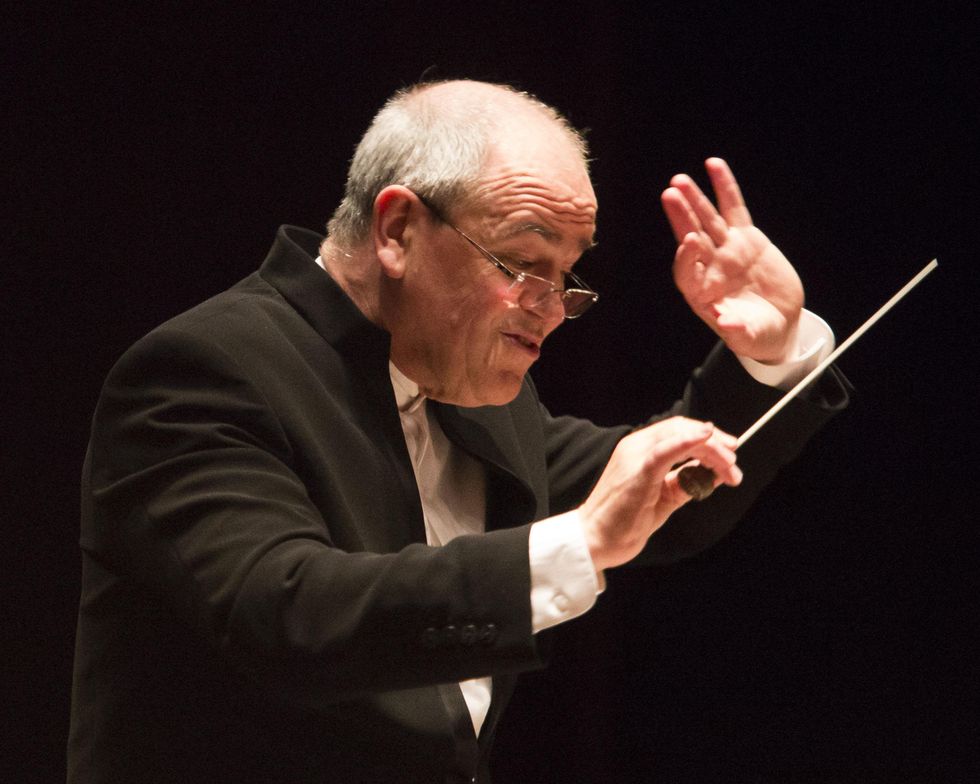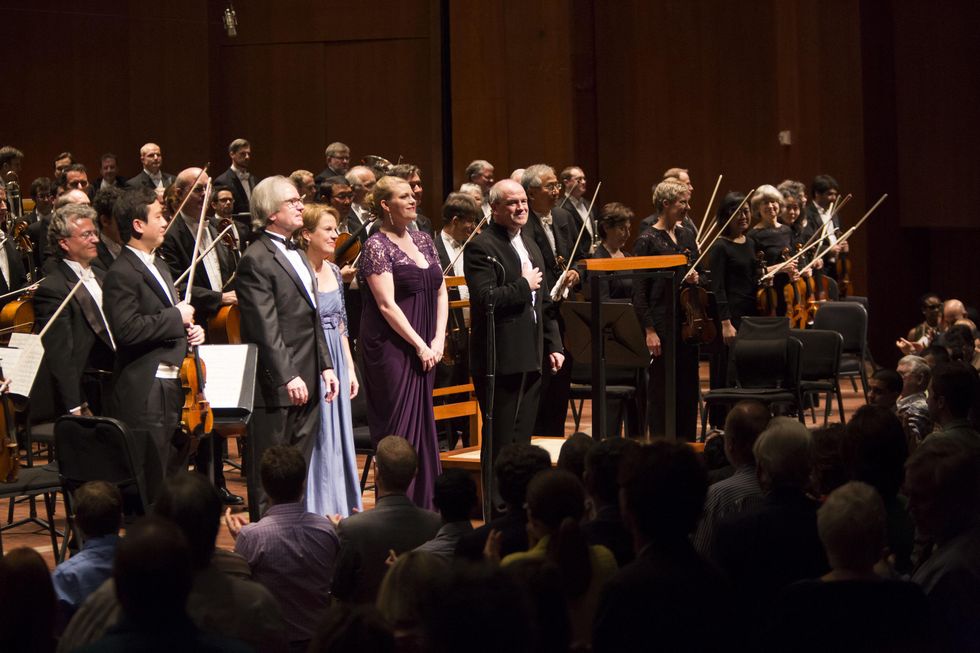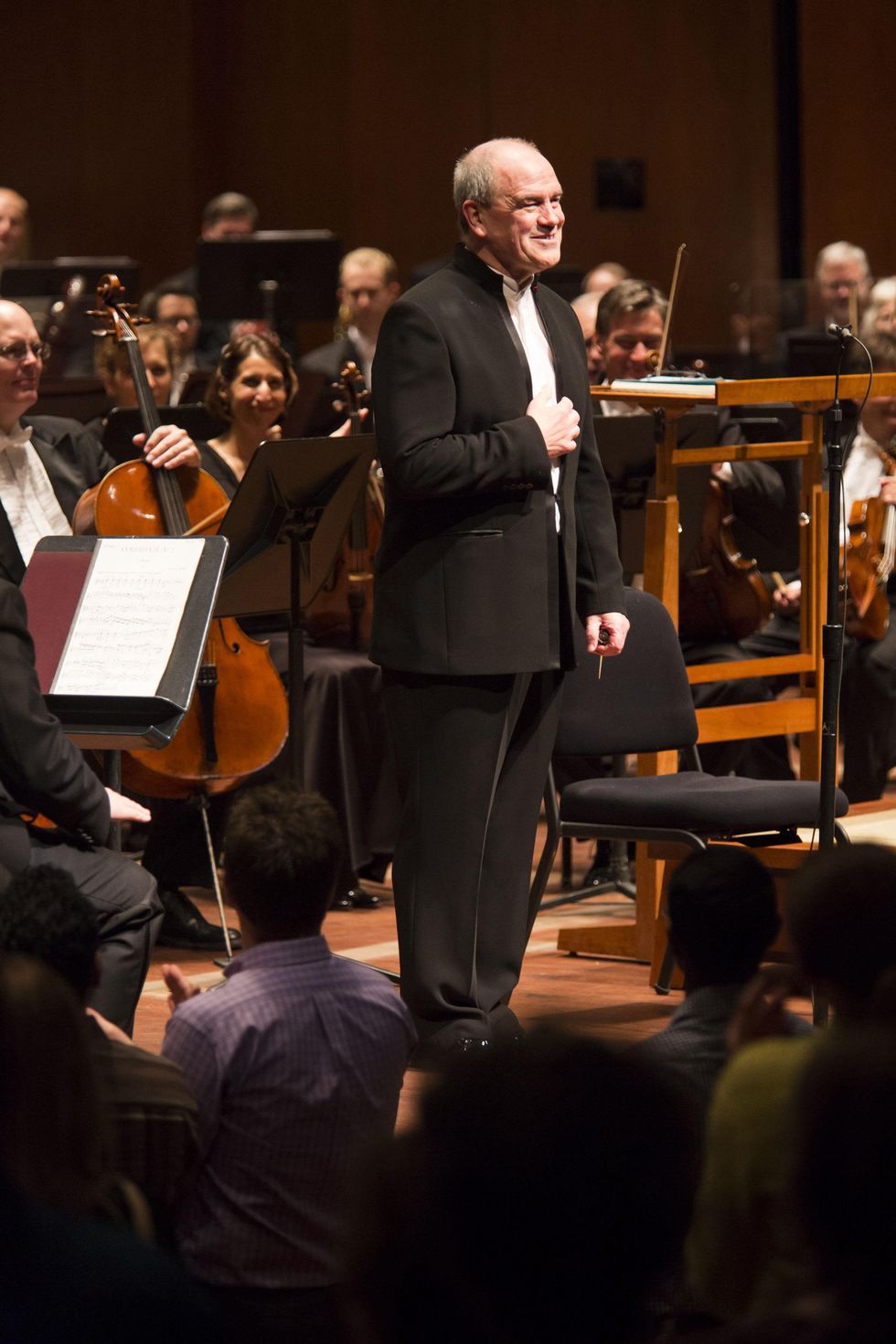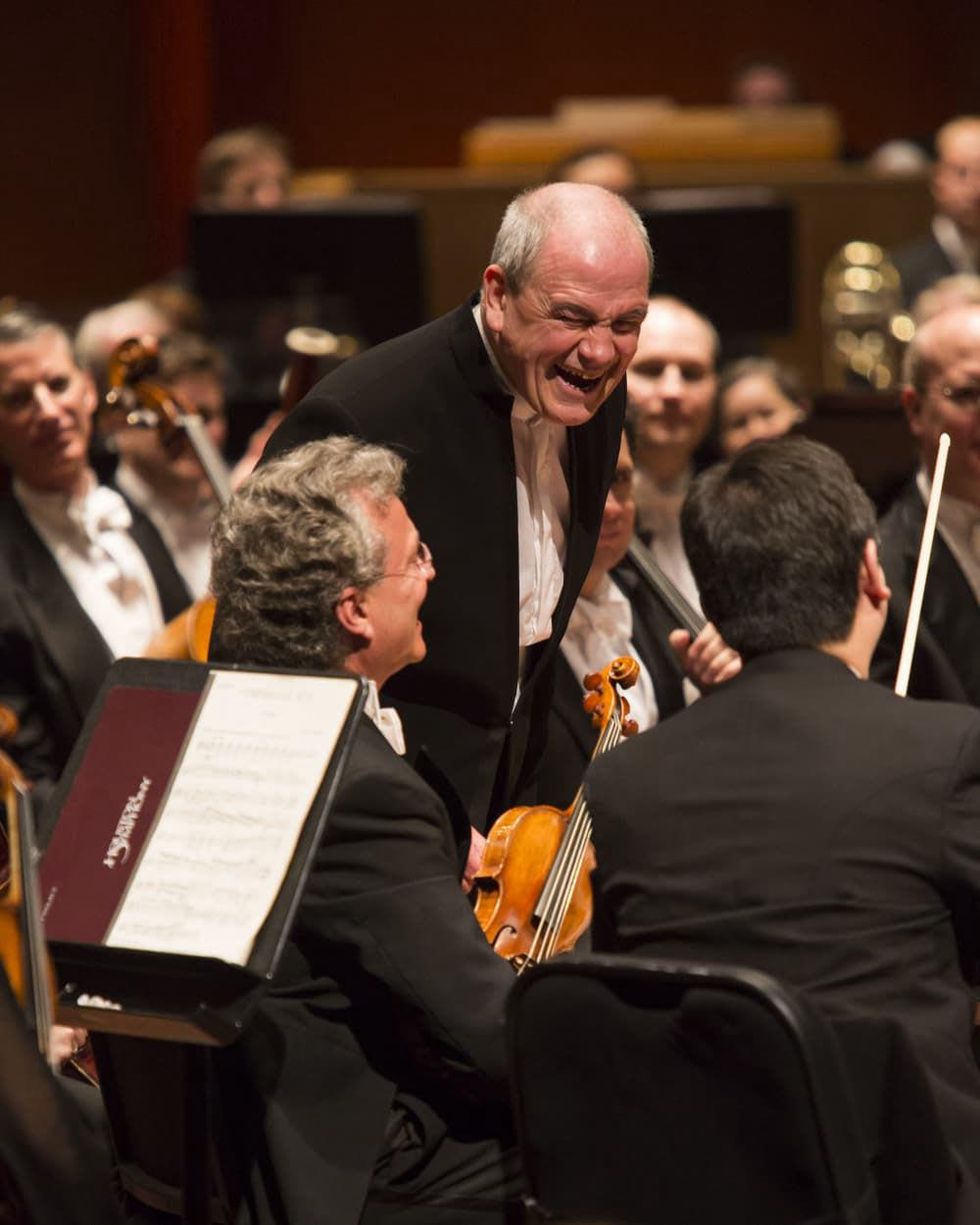Hans Graf's Grand Farewell
Hans Graf's farewell: Hang on to your Wunderhorn, this is Mahler like you've never heard it
In 2000, he started at Houston Symphony with a program of Mozart, Schubert, John Adams and Carl Orff's popular Carmina Burana. Tonight, Maestro Hans Graf completes his impressive tenure as HSO's longest music director with Mahler's breathtaking Symphony No. 2 in C minor, the "Resurrection." To say what happened in between would take volumes.
At least 12, that is. Friday night, before Graf conducted the first of his two farewell concerts of the Mahler Second, he was presented with assorted gifts, including a 12-volume bound set of the 400 programs he's conducted while here in Houston. He also received a facsimile score of Mozart's own notation of the 40th symphony, a framed "class photo" of the musicians, a bottle of some rare vintage he's sure to enjoy and perhaps the greatest gift of all for a devoted conductor: A big wave of admiration from everyone gathered in Jones Hall.
Graf kissed the Mozart score as if it were sacred, clutched it under one arm and then graciously replied, "Surely I've spent the greatest years of my musical life here in Houston."
It was hard not to feel strong emotion at his heartfelt words. Reflective, he added, "not to get, yeah, too sad" in his charming accent and then he quickly changed the mood. He thanked everyone for coming over the years and said he hoped we would "soon get a refreshed and rejuvenated Jones Hall." Ouch.
"Surely I've spent the greatest years of my musical life here in Houston."
But who doesn't love a touch of irreverence? It's his way of telling us we deserve better, and I'm not going to argue. Anyone who has ever tried to find the restrooms at Jones Hall knows that the venue is desperately in need of certain . . . improvements.
A few years ago, I had the pleasure of meeting Graf backstage. He was quite cordial, smiling profusely, even though it was only a fleeting moment. In that short time, he made me feel welcome. I find significance in those small details.
Earlier this month, to cite yet another example, the Museum of Fine Arts, Houston invited Graf to screen his favorite film. He chose Jean Cocteau's Orpheus. "Get out of here," I thought to myself when I looked at the film calendar. "That’s my favorite film!" And now, whenever I watch it, I'm going to think of the classy conductor.
He is not without his fascinating quirks, either. Did you know that Graf's favorite baton is a just a standard model he's stuck into a cork from a bottle of 1928 Krug? Apparently it even flew into space with NASA astronaut John Grunsfeld as part of Graf's production of Holst's The Planets: An HD Odyssey.
Earlier this year I was overwhelmed by another of Graf's farewell season concerts: His semi-staging of Alban Berg's expressionist opera Wozzeck. It was evident that particular piece is deeply important to him, but it's hardly a crowd pleaser. Well, elsewhere, perhaps. Performed here without intermission, the audience was nonetheless mesmerized by Graf's interpretation of this simultaneously cerebral and violent opera.
On Friday, Graf received a standing ovation before he even lifted his baton, and Mahler's second symphony is without doubt a crowd-pleaser. It is also epic, requiring large numbers of string players, huge brass and woodwind sections, harps, at least seven percussionists, and even an organist at the finish. It's a symphony that smacks you over the head, perfect for a farewell, but also suggesting hope for the future.
On Friday, Graf received a standing ovation before he even lifted his baton, and Mahler's second symphony is without doubt a crowd-pleaser.
HSO's performance is filled with a stunning array of movement. The numerous Houston Symphony Chorus members entered halfway through to take seats above and behind the orchestra, a percussionist climbed steps to play a tubular bells, brass players left the stage on several occasions to form ensembles playing backstage "in the distance," and in the fifth movement soprano Erin Wall emerged from the chorus to wander through the string section, eventually meeting mezzo-soprano Bernarda Fink downstage for a duet.
And in front of it all was Hans Graf bouncing and swaying, pushing and pulling with striking sophistication through the nearly two-hour symphony.
It's a work I know well, having sung in the chorus for a performance when I was an undergraduate music major. Familiarity makes it easier for me to see how themes from the finale are already present in the first phrases of the first movement, but Graf's well-planned interpretation also made me hear it fresh. Mahler's phrases vacillate between the extremely quiet, decaying episodes that disappear into thin air, only to be followed by crashing cymbals and even what is often referred to as a "death-shriek" in the fourth movement. A deceptively "happy" second movement in A-flat major is almost creepy, as if it's foreshadowing something awful.
It can be unsettling, until it just takes over your whole spirit. The piece is possibly best described as cinematic, and anyone who witnesses even a lesser performance will find it unforgettable.
Graf's good taste here is crucial, as always, and his passion is hardly in reserve. He has decided to take us on a wild ride before he says goodbye. If you need any more evidence that both Apollo and Dionysus have been watching over him most of his career, don't miss his farewell to Houston on Saturday night.
A Graf Farewell will take place at Jones Hall at 7:30 p.m. on Saturday. Tickets start at $29. Find more information here.









